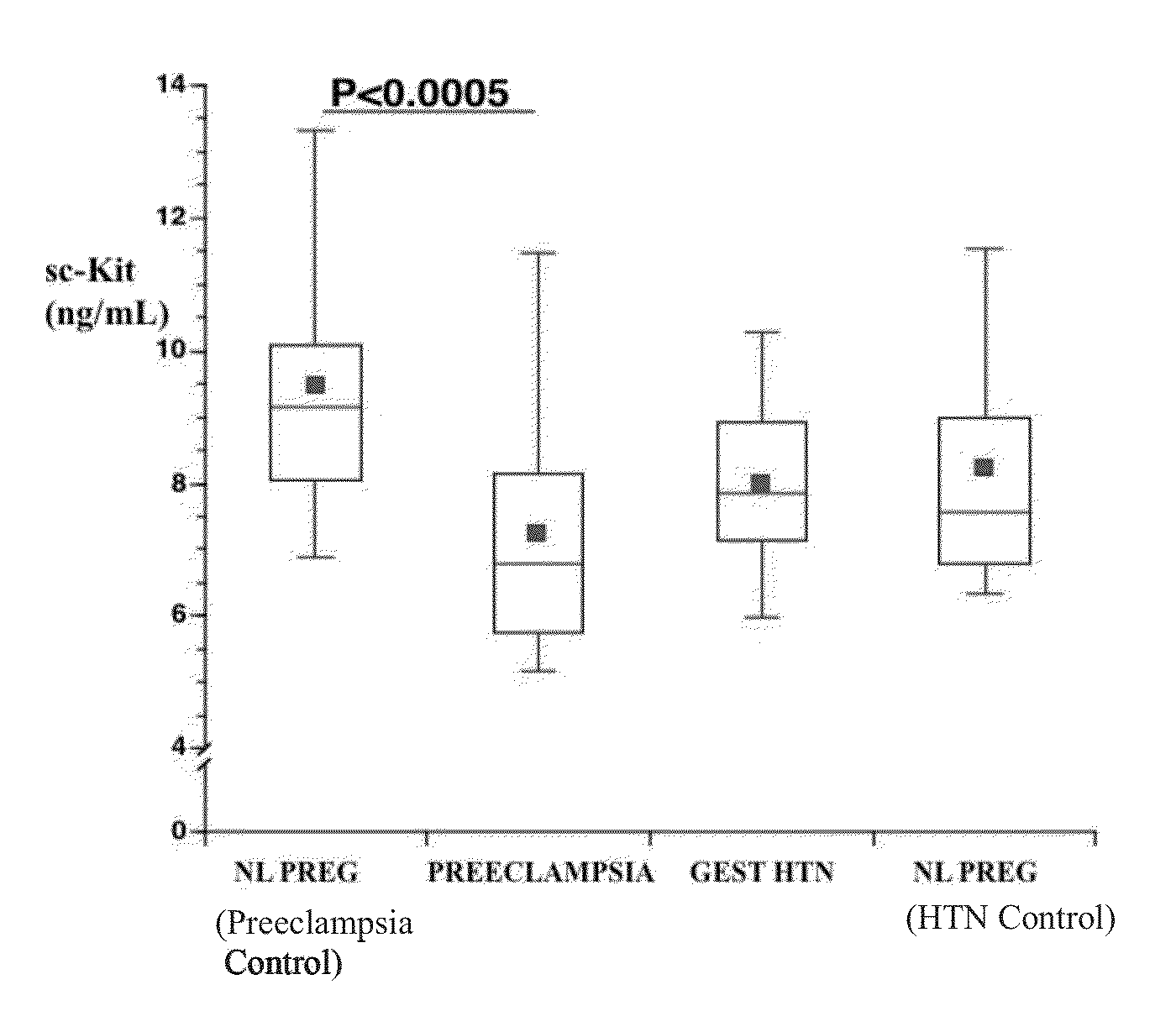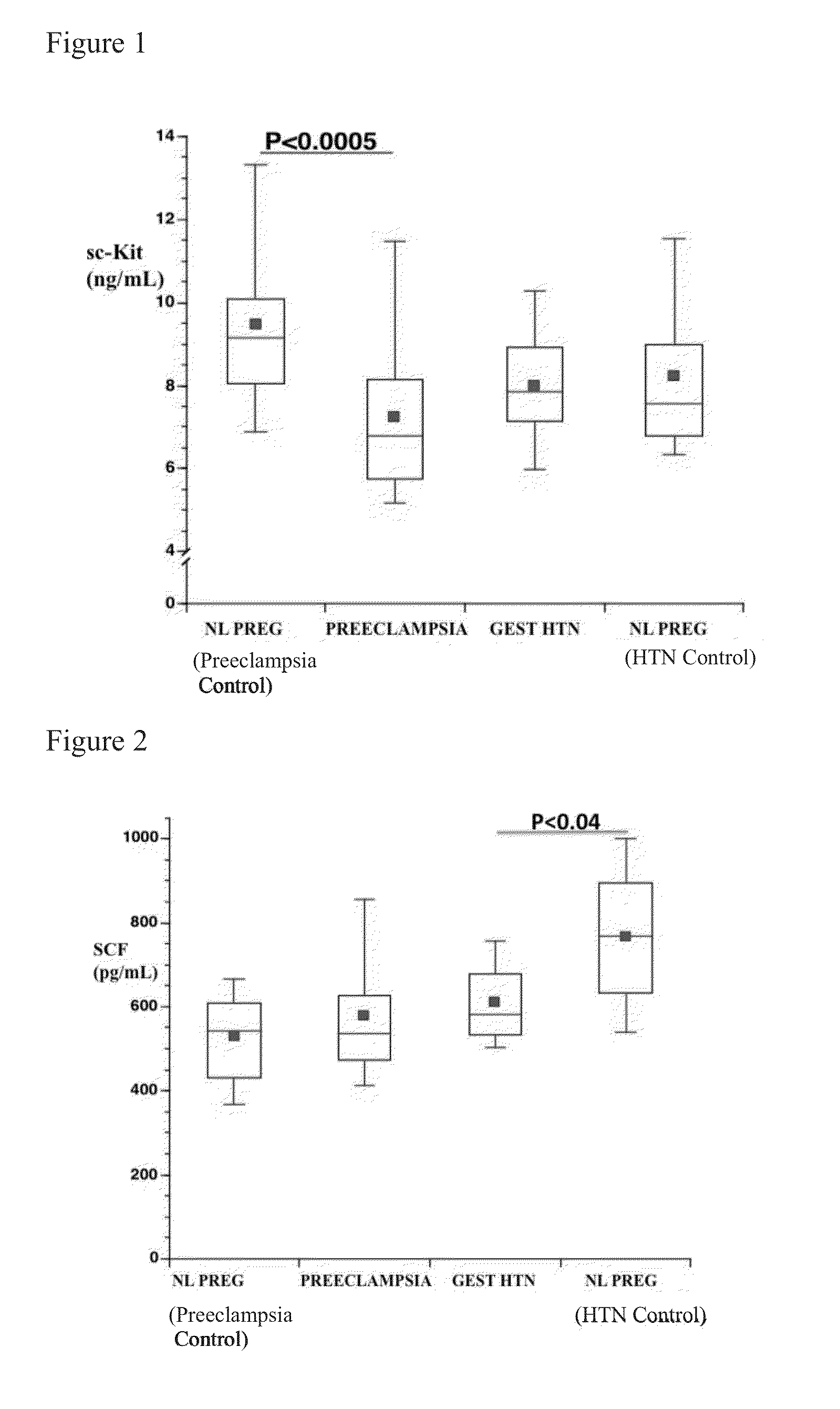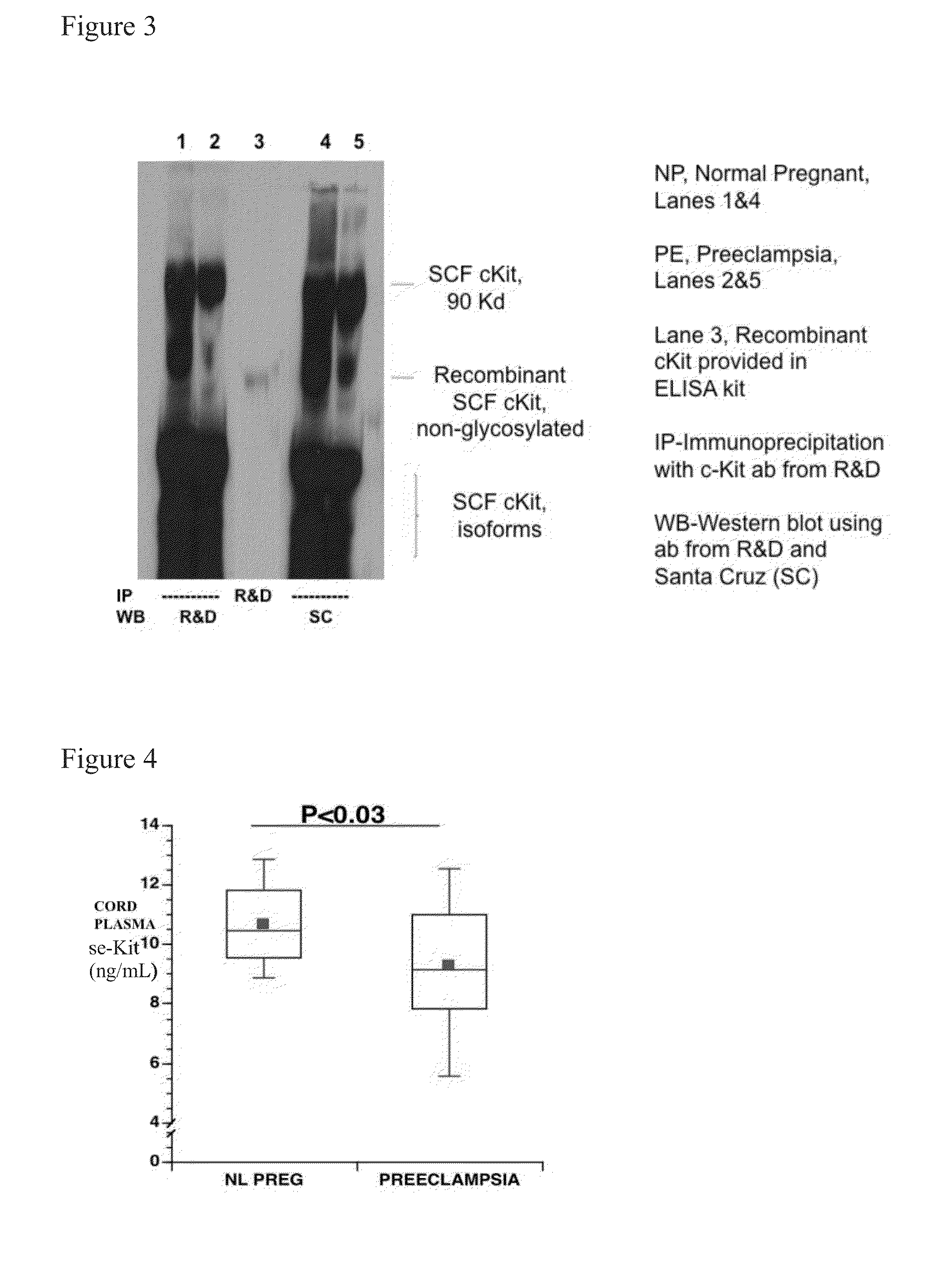Soluble CD117 (sc-kit) for diagnosis of preeclampsia and eclampsia
a technology which is applied in the field of preeclampsia and eclampsia diagnosis in pregnant subjects, can solve the problems of inadequate etiology and pathogenesis of preeclampsia, poor prediction of pregnancy outcome, and inability to accurately predict pregnancy outcome, so as to achieve the effect of reducing the concentration of sc-kit with time and not attenuating the concentration
- Summary
- Abstract
- Description
- Claims
- Application Information
AI Technical Summary
Problems solved by technology
Method used
Image
Examples
example 1
Methods
[0119]Samples.
[0120]Archived plasma samples were obtained from the Preeclampsia Program Project (PEPP) longitudinal and cross-sectional studies of pregnant women enrolled at their first prenatal visit and followed through the immediate postpartum period. Clinical data was deidentified. A jury of clinicians met monthly to determine pregnancy diagnosis of all the women. The symptoms of Preeclampsia are: 1) new onset hypertension, plus 2) having proteinuria, plus 3) manifesting hyperuricemia (uric acid in serum greater than 1 standard deviation from normal for gestational age) with reversal of hypertension and proteinuria postpartum (Chesley, Kidney Int, 18:234-240, 1980). Uncomplicated pregnancy controls are normotensive, without proteinuria or hyperuricemia throughout gestation, and delivered of healthy babies at term. All participants were without illicit drug use, and had no history of renal or vascular disease.
[0121]Cross-Sectional Study:
[0122]Women with preeclampsia develo...
example 2
Cross-Sectional Study
[0135]Pilot data had indicated that lower concentrations of the soluble (circulating) receptor sc-kit exist in maternal plasma of women with preeclampsia compared to either controls with uncomplicated (normotensive) pregnancies or women with just gestational hypertension without other signs of preeclampsia. However, a general decline in plasma sc-kit concentrations was also observed with advancing gestational age. Women with preeclampsia develop the disease and deliver at an earlier gestational age on average compared to women with gestational hypertension without proteinuria. The number of patients was therefore expanded in this cross-sectional study during the third trimester; matching women with preeclampsia and women with gestational hypertension to separate control groups according to the gestational age at the time of venipuncture. Thus, soluble sc-kit and stem cell factor (SCF; also known as kit-ligand) were compared in plasma from 26 women with preeclamp...
example 3
Longitudinal Study
[0141]Similar to the cross-sectional study subjects, longitudinal subjects who developed preeclampsia delivered earlier (p<0.001), had lower birth weight babies (p<0.001) and birth weight centiles (p<0.01), and by definition significantly higher blood pressure at admission to labor and delivery (p<0.001). Plasma sc-kit concentrations were significantly reduced, both at 18 weeks (prior to clinically evident preeclampsia) (P<0.02) and during the third trimester (during the clinical syndrome) (P<0.005) in women who developed preeclampsia compared to controls (FIG. 6).
[0142]FIG. 7 shows that sc-kit concentrations decreased progressively over the course of uncomplicated pregnancy. Significant decreases occurred at the 16-19-, 27-30- and 40-42-week intervals compared to the 5-10 week interval, and between the 16-19 and 40-42 weeks' gestation intervals. FIG. 8 confirms previous reports that plasma PlGF increases during the first 30 weeks of gestation and then declines rem...
PUM
| Property | Measurement | Unit |
|---|---|---|
| blood pressure | aaaaa | aaaaa |
| diastolic blood pressure | aaaaa | aaaaa |
| diastolic blood pressure | aaaaa | aaaaa |
Abstract
Description
Claims
Application Information
 Login to View More
Login to View More - R&D
- Intellectual Property
- Life Sciences
- Materials
- Tech Scout
- Unparalleled Data Quality
- Higher Quality Content
- 60% Fewer Hallucinations
Browse by: Latest US Patents, China's latest patents, Technical Efficacy Thesaurus, Application Domain, Technology Topic, Popular Technical Reports.
© 2025 PatSnap. All rights reserved.Legal|Privacy policy|Modern Slavery Act Transparency Statement|Sitemap|About US| Contact US: help@patsnap.com



